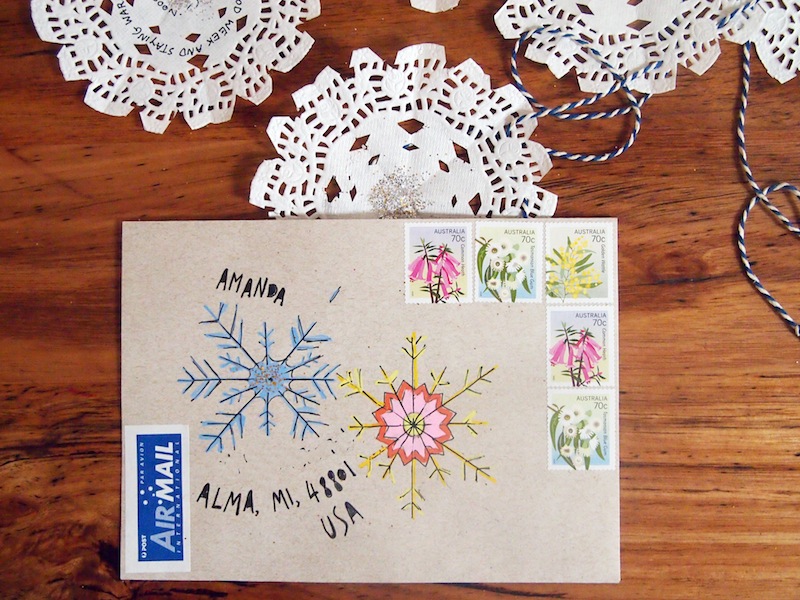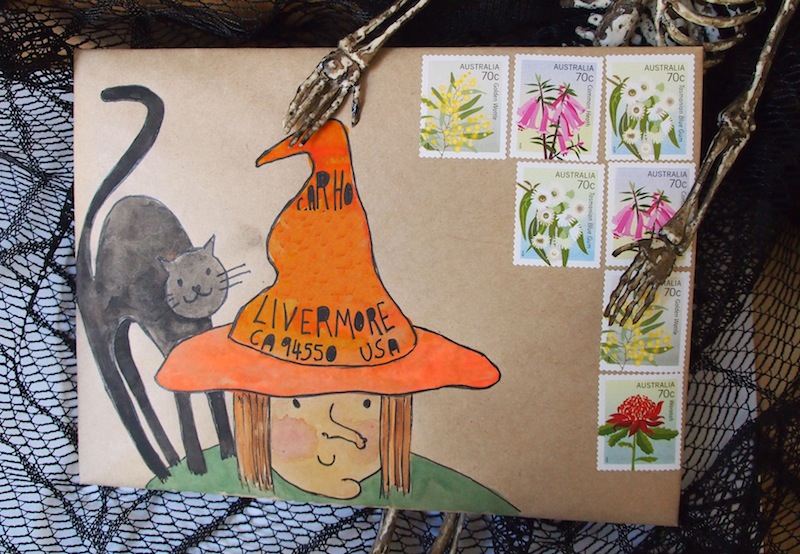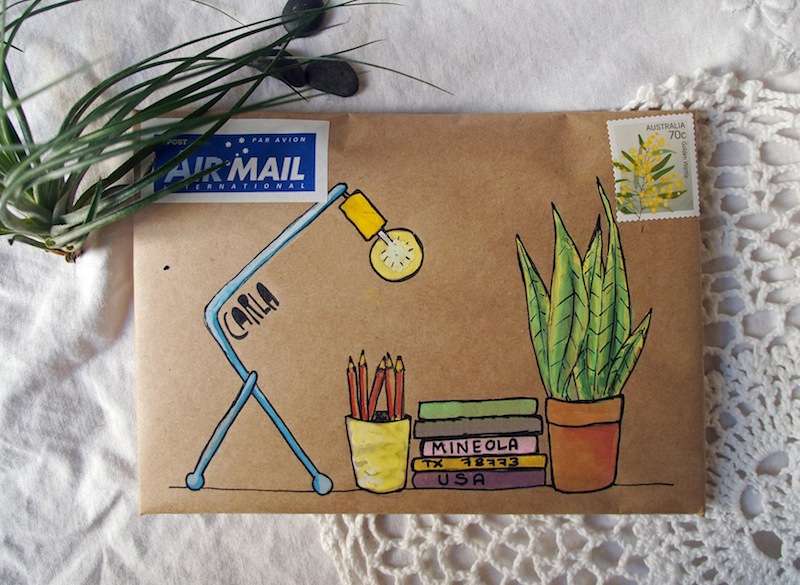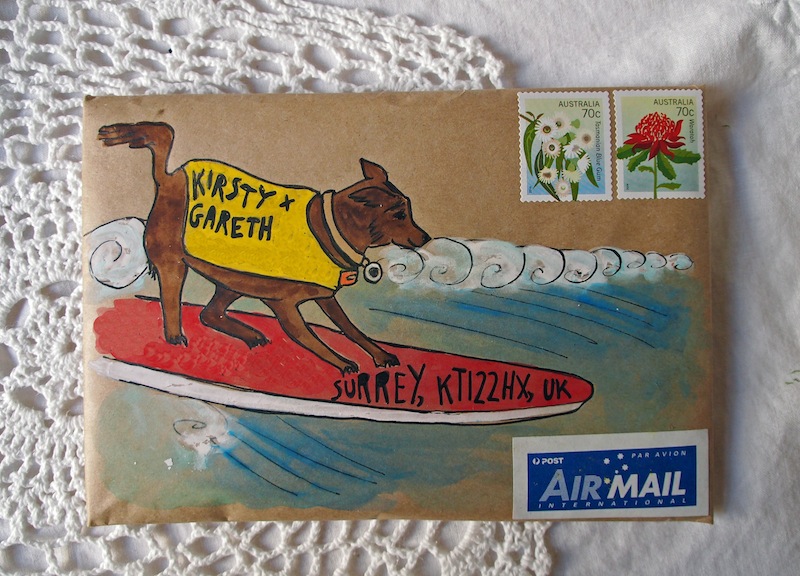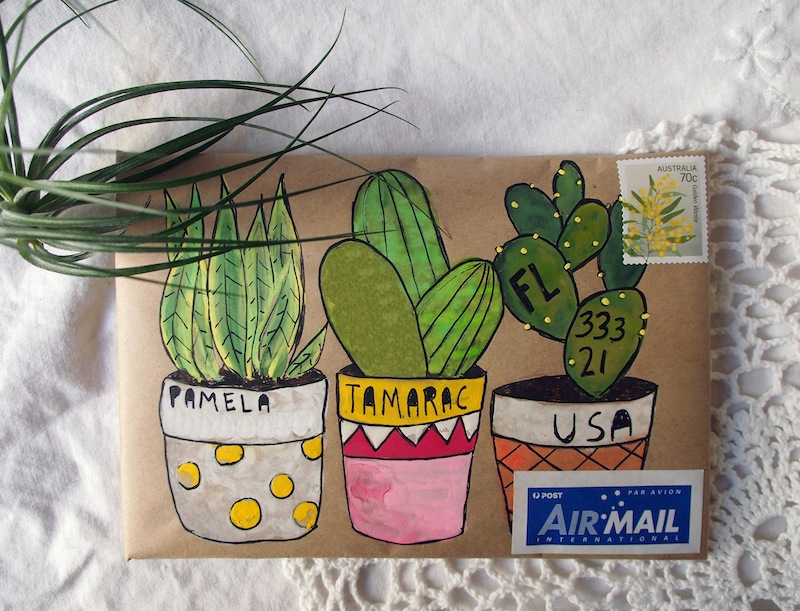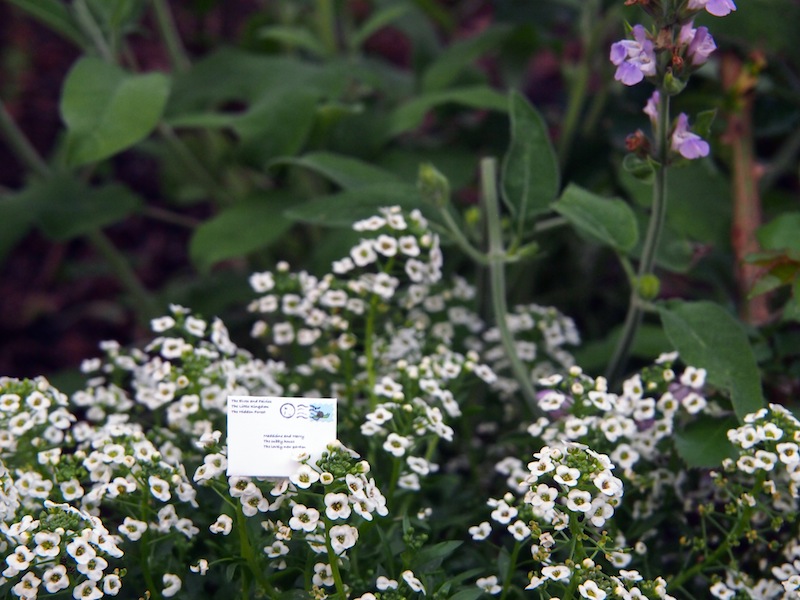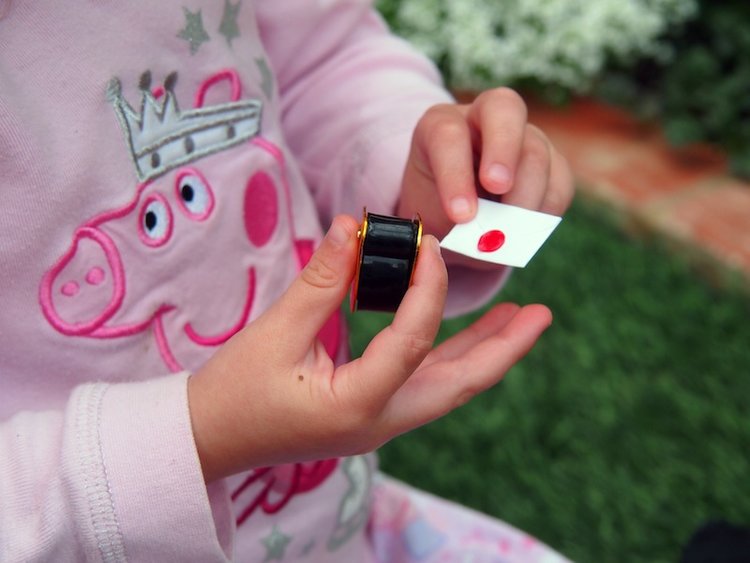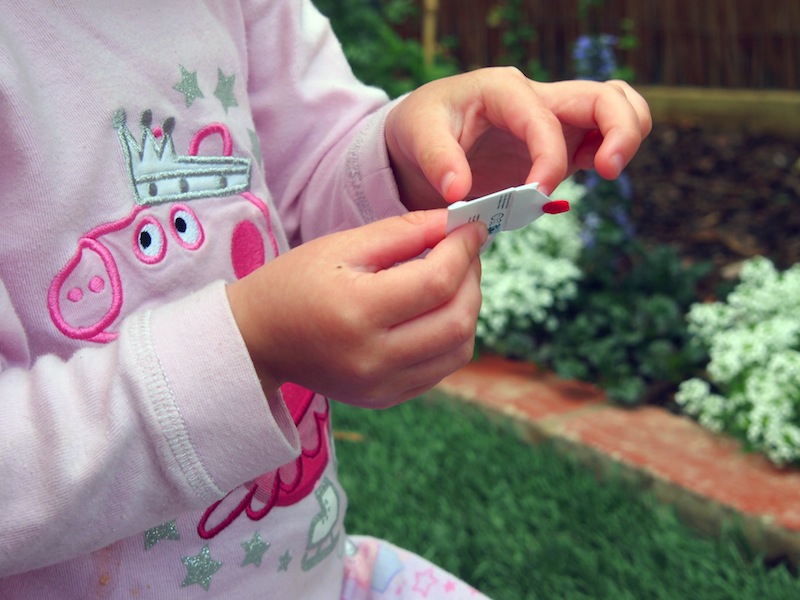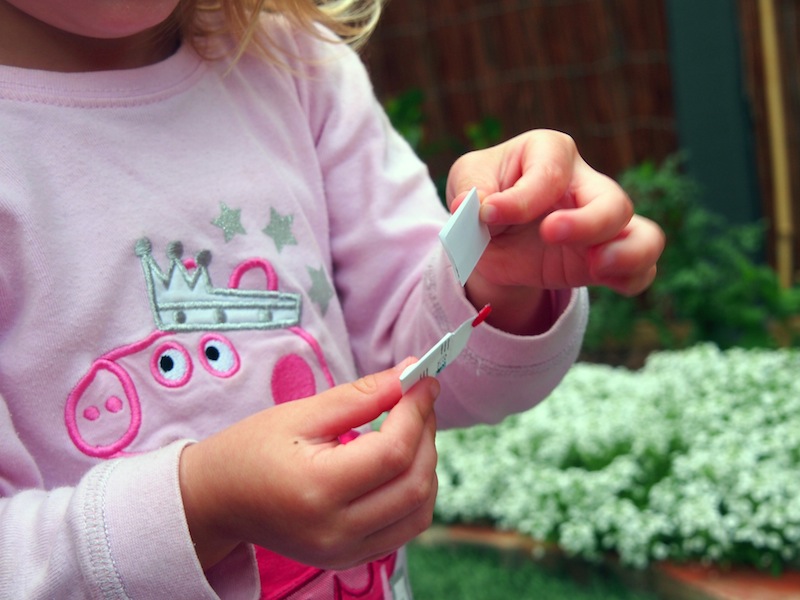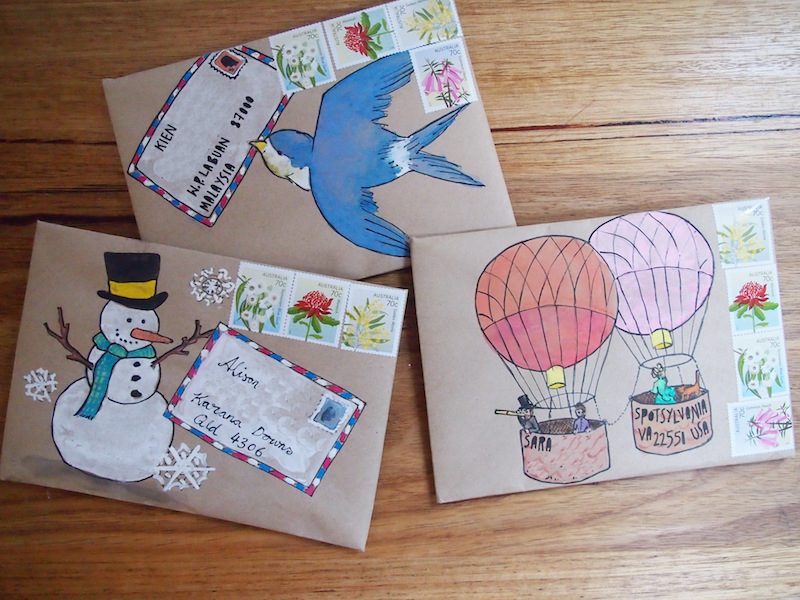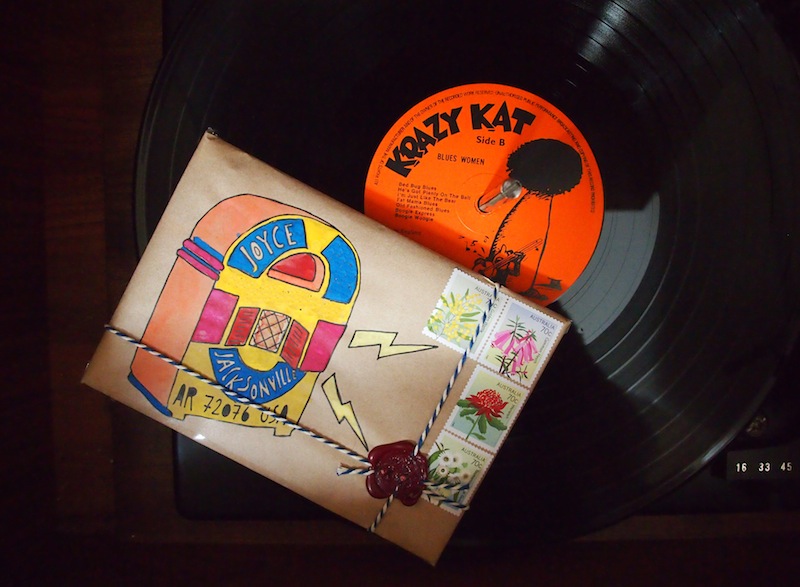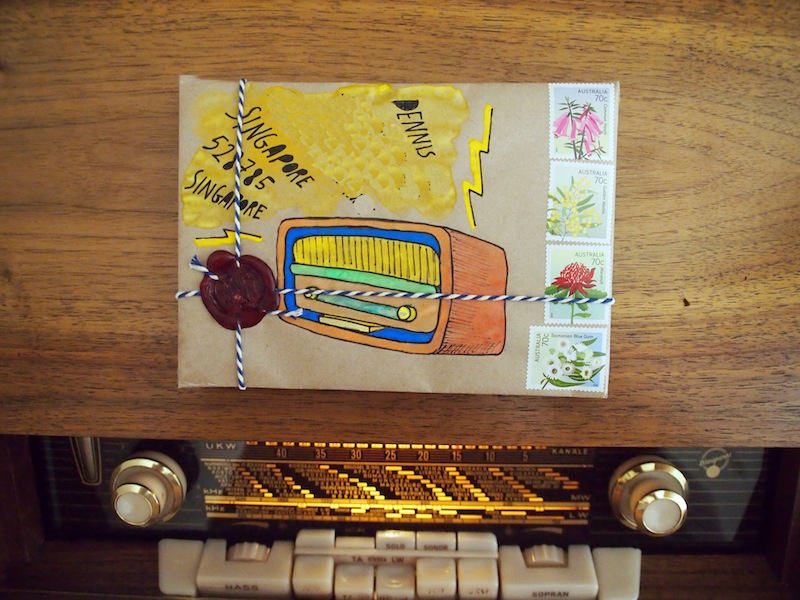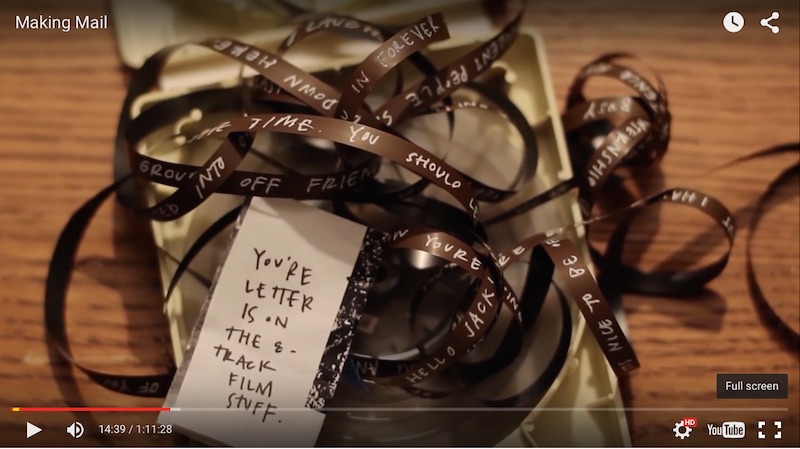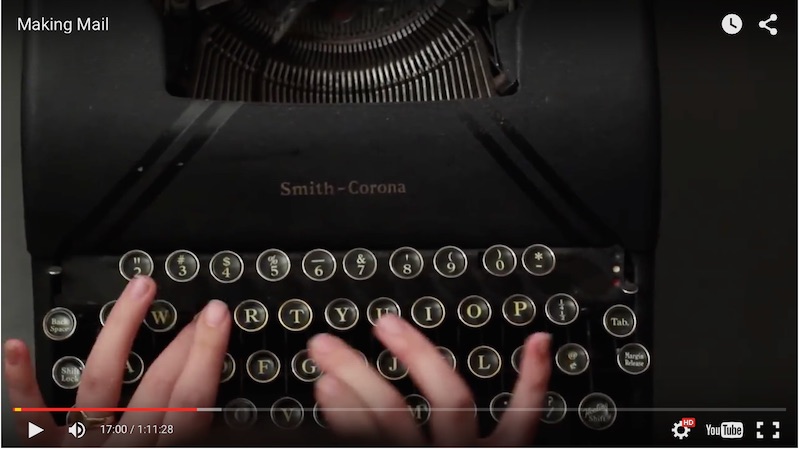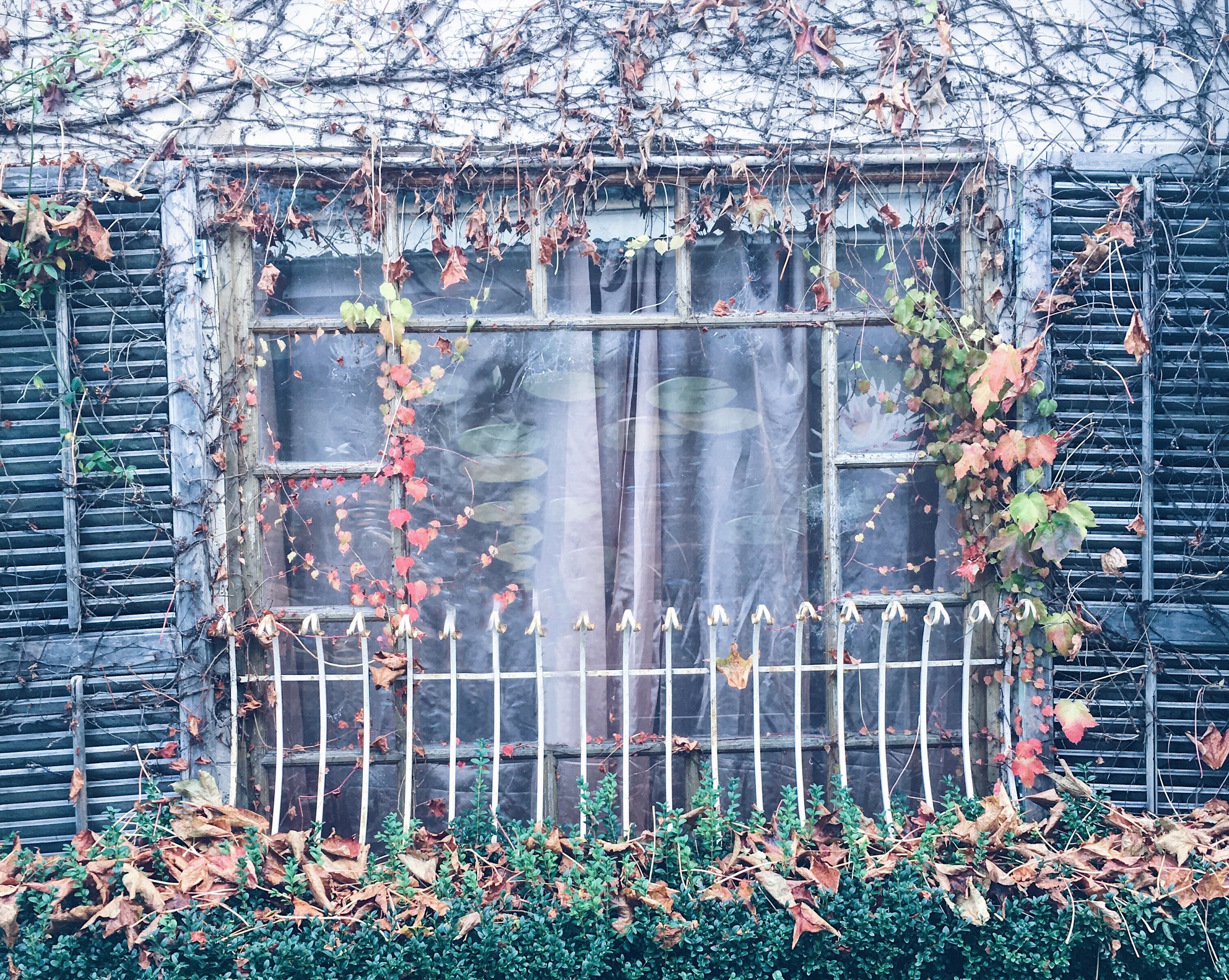
JOURNAL
documenting
&
discovering joyful things
A week of creative snail-mail: snowflakes
I've just finished a week of Snail Mail My Email, during which I pledged to write "creative mail" on behalf of strangers, using copy sent to me via email.
This was the first letter I wrote. The note itself was very short, and the "doodle request" was for a snowflake. I decided to fold up paper doilies and cut little patterns in them to make snowflakes. Then I wrote the message on one of the snowflakes, sprinkled them with a bit of glitter for extra pre-Christmas oomph, and threaded them with string to create a fun garland. I hope the mystery Amanda likes the letter from her friend!
Mail art: ghost post + monster mail
Some outgoing Halloween-themed mail-art from this week...
ps. have you heard about my letter-writing and mail-art e-course?
Over five weeks, I will guide you through multiple methods of making beautiful mail-art and creative, handmade stationery; teach you the art of writing and storytelling; help you forge personal connections in your letters and find pen-pals if you want them; and share time-management tips so even the busiest people can enjoy sending and receiving letters. Register your place or find out more information right here.
Snail Mail My Email + a letter-writing party?
 When was the last time you received an email?
How did it make you feel?
When was the last time you received an email?
How did it make you feel?
When was the last time you received a handwritten letter in the mail? How did that make you feel?
Once upon a time, an artist and filmmaker named Ivan Cash took to the streets asking strangers those very questions, and not surprisingly but somewhat touchingly (is “touchingly” a word?), almost everyone said they were indifferent or even overwhelmed by their emails, but that receiving a handwritten letter made them feel warm, special, happy, and like someone had believed they were worth something special.
Five years ago, he started a month-long art project called “snail mail my email,” during which you could send him an email with a message for somebody else, and Ivan and a handful of friends would hand-write your message and post it to the person you had nominated. They were overwhelmed with requests. Far too many to handle. More than 10,000, in fact.
Since then, Snail Mail My Email has evolved into a hugely collaborative and successful annual, week-long community art event, during which hundreds - even thousands - of volunteers from all over the world write and post letters on behalf of others.
This year, I have signed up to be a volunteer letter-writer. Will you join me? Maybe you could make it a fun event with other people who live near you? Here’s what it takes.
* During the week of 9 to 13 November, you and I and all the other volunteers around the world will each be sent up to 15 emails, which we are to then hand-write, and post to the address given. It could be anywhere in the world * We have to write and post the letters during that week * We’re expected to do something a little bit creative with the letters: a doodle, a lipstick kiss, a hint of washi-tape… * We’re also asked to take photos of our letters (minus any identifying details) and share them on social media
What do you think? I’m fairly confident I could write up to 15 letters in five days, especially since I’m just copying out (and making pretty) somebody else’s words.
A lot of volunteers make a bit of an event of it, planning letter-writing parties and such things. If you sign up and you’re in Melbourne, let me know. Maybe we could have a fun, letter-writing party where we all pool our stationery and art supplies, and bring doughnuts and cupcakes and cheese, and talk and laugh and write and craft and make new friends. That sounds pretty good, don’t you think?
There's more information and a straightforward volunteer form on the Snail Mail My Email website.
ps. Here is a little video of the people Ivan approached, asking about email and snail mail. Just note that it was filmed in 2013, so the dates of the campaign are not correct. If you want to take part this year (either to volunteer or to have a letter written), the dates are 9 to 13 November, 2015.
Snail Mail vs. Email from Ivan Cash on Vimeo.
Fairy snail-mail
 Look what arrived in the mail for Scout and Ralph last week! The tiniest envelope you've ever seen, complete with a minuscule stamp (of a snail, because snail-mail, natch), and an adorable wax seal.
Look what arrived in the mail for Scout and Ralph last week! The tiniest envelope you've ever seen, complete with a minuscule stamp (of a snail, because snail-mail, natch), and an adorable wax seal.
Inside was a teeny tiny card, with a letter to the children written inside. The letter was from the Elves and Fairies, who confessed that they had secretly been playing in the children's garden every night, and particularly enjoyed the new cubby house. They hoped that this was ok, and promised to put all the toys back exactly where they had found them so nothing would get lost.
The Elves and Fairies also promised that if the children left them a letter in their toy postbox, they would write back. And would Ralph and Scout like the Elves and Fairies to send them a present? They would be happy to do that, as long as the children understood that the present would have to be very, very small (or else it would be too heavy to post).
This was an adorable little letter, with attention paid even to the tiniest detail. It came in a little glassine envelope (with its own wax seal) alongside a magnifying glass for reading the letter. I ordered it from Leafcutter Designs, and the whole thing cost $US9.75 plus postage, which I think was quite the bargain.
7 messages in bottles
 I’ve been reading about messages in bottles. It’s research for my book, and it has been a lot of fun. Fascinating, creative, poignant, sometimes heartwarming, messages, cast adrift* in the hope that someone, somewhere, will find them. Here are seven of my favourites. (There are loads more, but you’ll have to read about them in the book, wink wink).
I’ve been reading about messages in bottles. It’s research for my book, and it has been a lot of fun. Fascinating, creative, poignant, sometimes heartwarming, messages, cast adrift* in the hope that someone, somewhere, will find them. Here are seven of my favourites. (There are loads more, but you’ll have to read about them in the book, wink wink).
The year is 1493. On his journey back to Spain after stumbling upon North America, Christopher Columbus is beset by a storm on the North Atlantic and believes his ship, La Niña, will likely be shipwrecked. He writes a desperate note to the Spanish Queen Isabella, telling her of his situation and that new land has been found, and tosses it into the ocean in a bottle.
Columbus survives the storm and returns home a hero, but his message in a bottle is yet to be found.
The year is 1784. Japanese sailor Chunosuke Matsuyama is treasure-hunting in the Pacific Ocean. He and his 43 shipmates are shipwrecked on a coral reef during a storm, and forced to take refuge on a nearby island with very little food or fresh water. Knowing he is likely to die, Matsuyama scratches the story of the shipwreck onto thin pieces of wood from a coconut tree, then casts them adrift in a bottle.
The bottle is found more than 150 years later, in 1935, on the shoreline of Japan.
The year is 1912. Early in the morning of 15 April, the RMS Titanic sinks in the North Atlantic Ocean after colliding with an iceberg on its way to New York. Before he dies, a 19-year-old passenger named Jeremiah Burke scribbles a note, and sets it adrift in a bottle.
“From Titanic. Goodbye all. Burke of Glanmire, Cork.”
One year later, the bottle washes ashore in Dunkettle, Ireland, only a few miles from Burke’s family home.
The year is 1914. WWI private Thomas Hughes writes a message for his wife and tosses it into the English Channel as he leaves to fight in France.
“Dear Wife, I am writing this note on this boat and dropping it into the sea just to see if it will reach you. If it does, sign this envelope on the right hand bottom corner where it says receipt. Put the date and hour of receipt and your name where it says signature and look after it well. Ta ta sweet, for the present. Your Hubby.”
Hughes is killed in battle only two days after releasing his letter. The bottle is found 85 years later, in 1999, in the River Thames, and is delivered to Hughes’ 86-year-old daughter Emily Crowhurst, now living in New Zealand.
The year is 1915. After the British ocean liner RMS Lusitania is torpedoed by a German u-boat during the first World War, one of the 1198 passengers and crew who ultimately perish with the ship hurriedly writes this message, and pushes it into a bottle:
“Still on deck with a few people. The last boats have left. We are sinking fast. Some men near me are praying with a priest. The end is near. Maybe this note will--”
The year is 1985. A man writes a letter, seals it in a bottle, and tosses it off the coast somewhere in Nova Scotia, Canada. The note says:
“Mary, you are a really great person. I hope we can keep in correspondence. I said I would write. Your friend always, Jonathon. Nova Scotia, ‘85.”
The bottle washes up 28 years later on a Croatian beach, but nobody has yet found Jonathon or Mary.
The year is 1990. A message is tossed overboard in a bottle, during a ferry-ride from Hull in England to Belgium:
“Dear finder, my name is Zoe Lemon. Please would you write to me, I would like it a lot. I am 10 years old and I like ballet, playing the flute and the piano. I have a hamster called Sparkle and fish called Speckle.”
In 2013, Zoe’s parents receive a letter at Christmas time, sent from the Netherlands: “Dear Zoe, yesterday on one of my many walks with my wife along the dikes of Oosterschelde looking among the debris thrown by the sea of embankment I found a little plastic bottle containing your message.”
What this research has got me thinking about is that before we had any kind of mobile or satellite technology, which is incredibly recently, there was pretty much no other way to get a message out there from a sinking ship than to trust it to a bottle and the waves and hope for the best.
Those sad and desperate notes, scribbled in literally the last few minutes of people's lives, show just how powerful is the human need to connect, whether it's to reach out to a loved-one, or just to make sure that someone - even a stranger - will know what happened to us. For many of these people, communication was their last deliberate act.
* If you have qualms about the romance of messages in bottles versus the potential environmental damage of tossing something into the ocean, famous Canadian oceanographer Dr Eddy Carmack may be able to put your mind at rest. "Drift bottle science is cheap, fun, and environmentally friendly," he says.
Dr Carmack is the head of the Drift Bottle Project, which launched in 2000 and has so far released more than 6400 bottles, in an important study of ocean surface currents.
Just maybe steer away from the plastic bottles, if you're going to do this. Plastics photodegrade in sunlight, meaning they break down into ever-smaller pieces, and the tiniest pieces release toxins that can poison the entire food chain when they are eaten by marine animals and birds.
On the other hand, glass bottles are relatively benign, says Dr Carmack. "The unfound bottles eventually break down, and become part of the marine environment."
Image credits: Bhavyesh Acharya, licensed for unlimited use under Creative Commons
Sayonara, crappy week
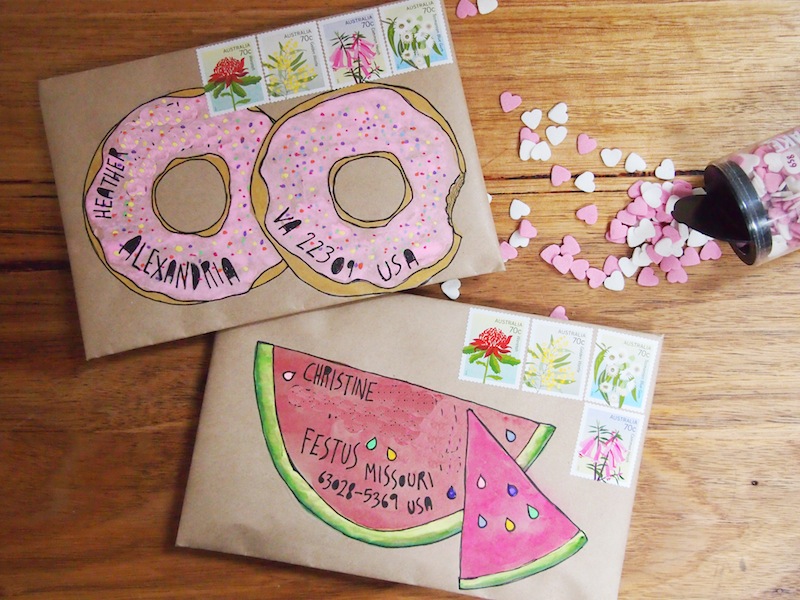 What a week! I'm not going to lie, I'm incredibly glad to see the back of this week, which seemed to last for months, and was fairly dismal for a lot of it. But anyway, we're at the end now. Finally! A sunny weekend is forecast, and I plan on doing some baking, and maybe a spot of drinking white wine in the garden. What are your plans?
What a week! I'm not going to lie, I'm incredibly glad to see the back of this week, which seemed to last for months, and was fairly dismal for a lot of it. But anyway, we're at the end now. Finally! A sunny weekend is forecast, and I plan on doing some baking, and maybe a spot of drinking white wine in the garden. What are your plans?
Meanwhile, here is some mail-art I've been making recently, in moments of peace. Painting mail makes me happy when I'm stressed or sad.
Making lately
 "And none will hear the postman's knock
Without a quickening of the heart
For who can bear to feel himself forgotten?"
~ WH Auden, 'The Night Mail'
"And none will hear the postman's knock
Without a quickening of the heart
For who can bear to feel himself forgotten?"
~ WH Auden, 'The Night Mail'
Hooray! At last I've managed to make up a new batch of "19 ways to make snailmail even more fun" zines, packaged in handmade envelopes and sealed with wax, to post to readers. I'll be spending my nights this week writing letters and wrapping the zines in brown paper and turning their addresses into pretty, painted pictures. What have you been making lately?
A movie about people making mail
Last year I came across a documentary (that you can watch online for free) called Making Mail. It is about a group of artists who use the postal service to share their art with each other and with strangers, all over the world.
It’s quite fascinating because it seems as though every time a new generation discovers mail-art, they think they are the first and they think they are alone.
I mean here was I (and I’m no artist but go with me because I’ll get to my point) painting the mail I send to you guys just because it was fun and I wanted it to look nice, and not knowing that anyone else was doing this, let alone that there was a whole movement around decorated mail, called “mail art.”
And then you watch this documentary and you first see a group of university students who stumbled upon the same realisations. They would write to each other, and try to find ways to make the mail as creative and interesting and interactive for the recipients as possible, just because.
And just when you think “Ok! They are doing this too, and they stumbled upon it in the same unexpected way as me!” the documentary interviews an artist couple who discovered mail-art in the 1970s. Again, by accident, without realising anyone else was doing it.
“I thought I had discovered the wheel,” one artist said, but then he was put in touch with Ray Johnson, a man who is now, with the benefit of history and academic hindsight, considered the father of “mail art” as a movement.
The nature of mail-art is that it’s personal. Art, sent just from one person, to another person. There’s not a lot of exposure in that! So it makes sense that it remains a fairly underground movement, and it’s entirely possible that in this shrinking world, there could be pockets of people still “discovering” this fun way of using the post, without realising that it has been done elsewhere and before.
Of course there were exhibitions - still are - for mail-art. Submissions invited and sent from all over the world and, most often, there are no rules. That’s one of the beautiful things about “mail-art” as a form of creative expression: once you discover there is a community out there, you also discover that the community fiercely protects its anti-art dedication to “no rules and no refusals.” Do what you like. No-one can tell you it’s not art.
Maybe the relatively-secret, underground existence of mail-art is about to change. After all, there’s only so many people who can avoid seeing the Internet, as time goes by.
But in the meantime, try watching Making Mail. It’s entertaining, interesting, and above all inspiring. Once you finish watching this little film, you will be itching to bust out the paints and gel pens and craft supplies, and send somebody a surprise letter.
A reminder
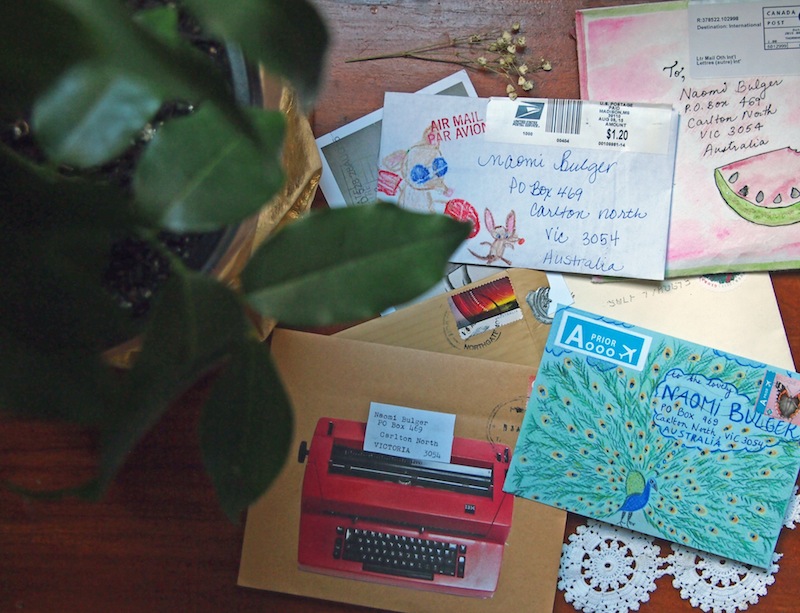 Hello! Have you sent me your thoughts on snail-mail yet, for my new book? Just send me an email, using the subject heading "write_on," answering this question:
Hello! Have you sent me your thoughts on snail-mail yet, for my new book? Just send me an email, using the subject heading "write_on," answering this question:
Who should you write a letter to today, and why?
Or this one:
What's so special about snail-mail?
I want to collect as many different responses as I can, so I'd really welcome your thoughts (and those of your Nanna, and your kid brother, and your Great Aunt Polly, if you'd like to quiz them for me).
I'll credit you if you want me to, or keep you anonymous if you prefer. Just let me know.
Thanks friends. This book is coming along really well, and I have discovered and interviewed so many amazing people who are doing incredibly creative and interactive things with snail-mail, open to all of us. Here's some more about what's in the book. I look forward to showing it to you soon!
Yours truly, Naomi xo

